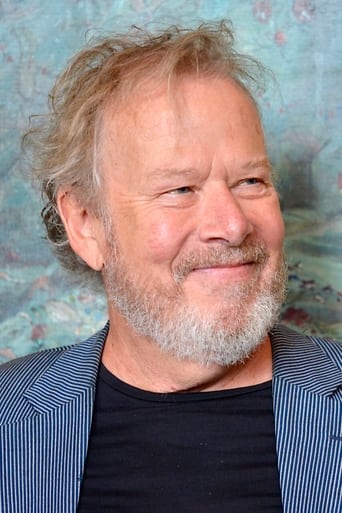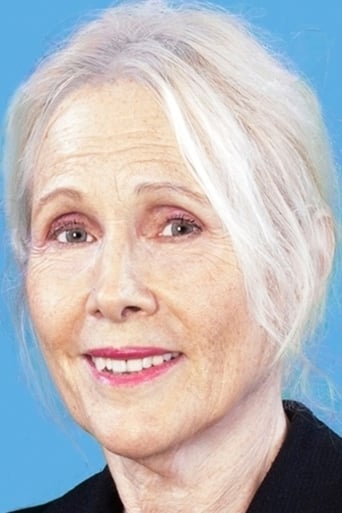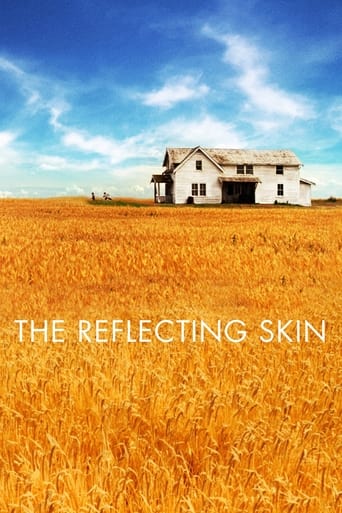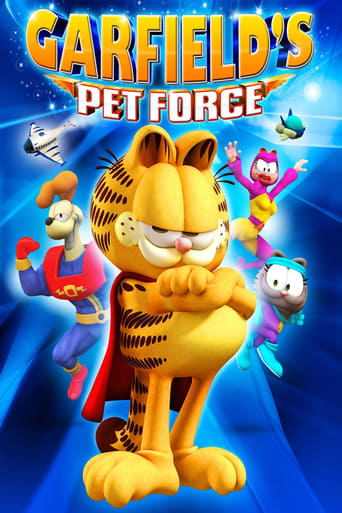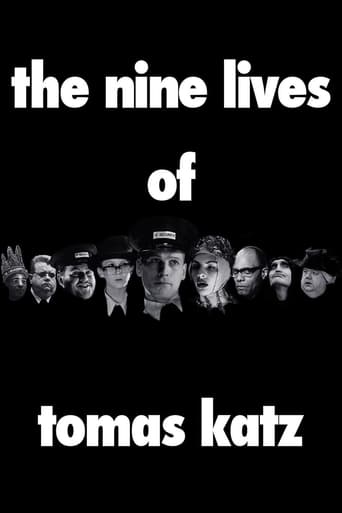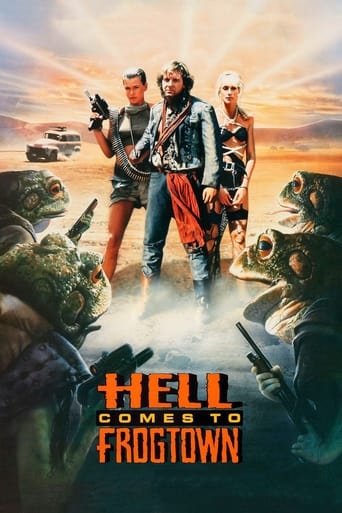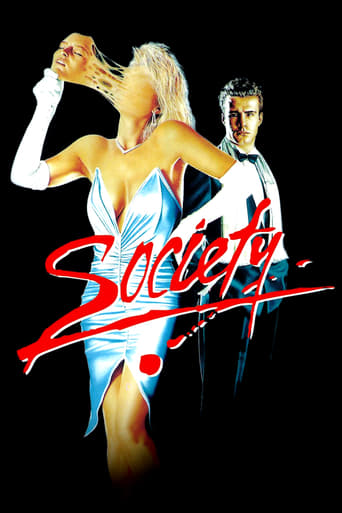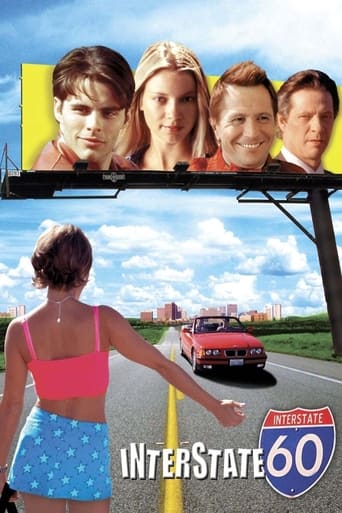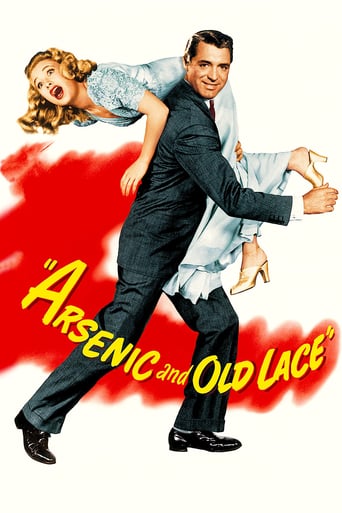
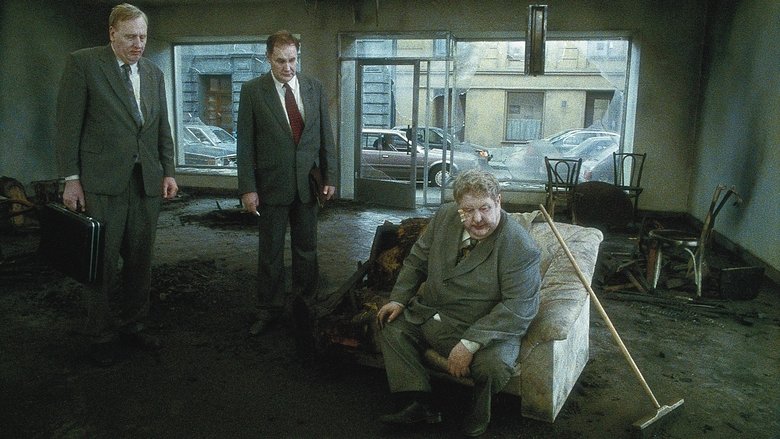
Songs from the Second Floor (2000)
A monumental traffic jam serves as the backdrop for the lives of the inhabitants of a Swedish city.
Watch Trailer
Cast


Similar titles
Reviews
This movie is a closer look at the social scenarios that would spring up if we are to experience a crisis as the one imagined by Anderson. As much as the camera stays aloof and objective, it is a very close up analysis of the characters involved in the story. Just like with any difficult moments in life the pillars are put into question, Family, Faith, Economy, and each shot was dedicated to one of them. The absurdity and the simplicity of the shot is what made this movie funny, because they remind us of something very common and very easy to grasp. What I also liked about this movie are the actors performances, with any movie there is always a feeling of Protagonism enforced upon us though for good reasons sometimes but to really delve into the mass you need actors just like in society of similar mayhem that is why the director decided to hire normal people to do the acting and that is why I believe it took 4 years to finalize it. Now, I call this cinematic style coin me for it, Scandinavian Neo-Realism!!
Roy Andersson spent a quarter decade break from film-making directing commercials, and it is from there that he garners his stylistic influences; the static tableaux that unveils a multi-layered and living canvas, the darkly deadpan humour, the still long takes, the absence of music, and the muted colour palette. In one of them, the camera centres on a man checking his lottery ticket against the grimy TV of a bar, before the ecstatic cries of another man, obscured and sitting at a far away table, pierce the mundane affair. The first man reacts to this unexpected winning by trying to rationalise: "Money isn't everything", and this is the same sentiment that the salesman of Jesus crucifixes later echoes as he tosses his unsold merchandise into a rubbish dump - who could ever think of making money off this crucified loser? Andersson is known for his remarkable dedication to his craft, and his feature films are years apart, for all the work that must go into them. He seldom ventures into real locations, but works on massive sound-stages at Studio 24 that are meticulously prepared and sculpted to resemble the real. He then decides on a perspective; the camera in SFTSF is a silent observer, never moving an inch, and the selected point of view becomes crucial. When the main character visits a church for some sort of solace in his misery, Andersson rejects the grandiosity and beauty of the architecture and chooses an angle that has a tall, ugly white pillar protruding through the middle of the frame, and seems to suggest that this world is one filled with spiritual discontentment, where the traditional religions have been stripped of their power and meaning, and no amount of swinging Jesus figurines will amend to that. As they approach the new millennium, the film's world is imbued with a sense of malaise, of futility and endlessness. Their jobs define them, and when those are taken away, they cannot plot another path. The silent son in the mental institution seems to be the only one who has accepted this, or is immune from it all, and there is a reversal, as the father is dragged away while vehemently protesting the state of affairs, as if he was the insane one. It is with great skill that a dismissal can be made so funny and sad at the same time, and it is somewhat Pythonesque in its humour; a man clutching desperately at his superior's leg while insisting his worth to the company reminded me of a similar action in Gilliam's Brazil. And then sometimes it is just simple. A classic magic trick begins, and the volunteer cries out in pain, and the audiences laughs as if it was part of the act, and then we cut so suddenly to the doctor's office, where he clutches his bloody stomach. Nothing seems to go right, and the doctor and the nurse are quietly in the midst of a divorce (although the doctor seems to want to ignore the issue much like Kalle ignores the ghostly apparitions that plague him). In the backdrop, so silently and subtly, a traffic jam seems to invade their lives, and it is funny when we have been watching a scene that has not cut for several minutes, but found ourselves only having moved a few metres, but it also serves to bring us back to the reality of these character's lives. They wear a ghostly white mask on their faces, and seem to be haunted everywhere by their coming mortality (by themselves, and by people back from the grave), and will try anything in order to cure this affliction. It is absurd to watch a room full of important officials and businessmen and clergymen convince themselves that a sacrifice must be made, and then trying to rationalise and translate this to a young child. They place a pile of rocks at the bottom of a cliff, and test its effectiveness like any normal bureaucratic safety procedure. Andersson utilises thousand extras, and cars, and elaborate costume, and shoots a scene of such immense and ceremonial scale, that our jaws drop because although a chuckle is given for the sudden push in the back, the bizarre spectacle has become normalised for each and every of the thousand, and that this feeling of dread and desperation is pervasive. He shows it in two other scenes that seem to stretch the deep focus into infinity. The first, an endless row of check-in booths at an airport, and a bustle of hopelessly tied down passengers that tow along skyscrapers of baggage, and take an eternity to never reach their destination. "Only a few more metres!" they yell encouragingly at each other, but of course we know that a few metres can seem like hours, and they move diagonally, lengthening their journey (into afterlife, some have suggested). Andersson makes the gradually dragging themselves towards the booth, through hundreds of takes, seem universal, with wooden models and figures that are directed via a system of pulleys and ropes. The second is the final scene, where rubbish and decay is littered at the outskirts of a miniature model city that stretches into the horizon. This is an extraordinary masterpiece of a long take, because of how the figures in the horizon inch towards us, how their haunting of Kalle invades reality and forces him to confront something he does not want to dwell on. And there is a tiny moment of recognition of their humanity too, as they humorously back away as he flings a piece of garbage, and then all the hidden characters in the fields also emerge, and they all slowly converge on him, and what was personal strife becomes a harrowing and universal experience.
Songs from the second floor, meaning not the first, perhaps of childhood, that is close to the ground and just up the stairs, and not the penthouse with its airy , unobstructed view of horizons, but the second floor, the middle space of life, the cramped space. This is the life being sketched, a series of vignettes about quiet unfulfillment with various characters caught in dead ends of a flat life that goes neither up nor down. A recurring motif shows characters caught in traffic jams with cars just inching forward a few yards now and then, car horns can be constantly heard through the windows suggesting this stifled urge to move forward. It's all so effortless and graceful here, a few strokes of immovable camera abstracting the din of real life and bringing to the fore a crystallized view of that deeper reality that hides behind appearances and eludes us. At the same time if the whole commentary here was about a sterile modern life, if the only view that was crystallized was about how life sucks in the alienated West, "ennui" and all the other things, I'd leave it for others to enjoy, there's no value for me in calling wallowing reflection, but this is also about a response to it and an attempt to formulate a worldview; songs instead of Bergman's mute horror at the absence of god. So what kind of song? Not actual ones but a playfulness that sings about suffering. An early vignette marvelously shows this, a man climbs on a stage to be sawed in half as part of a magician's show but as the saw dips halfway through the box he starts gasping, actually being cut. Having been stitched, this hapless fellow is back home and as the wife changes sides on the same bed her movement makes him hurt and moan. There's actual pain in life, it's not illusory though we'd like to pretend it is in the spectacles of diversion we concoct. There's pain in being on the same bed with another. And yet the whole film is sketched from a distance of camera that shows this pain to be only part of the stageshow, only acted as part of it, it does not spill on this side of the viewing, it does not try to cause suffering, it does not "fix" the mind (Bergman does), it does not sweep us to believe in the illusion of a man having been cut. Having unlocked this, what? The entire film is about characters coming and going from that stage, some of them more obnoxious, but underneath the cynicism there's a gentle view that says these are the games we play, the roles we enact. My girlfriend still found it depressing so maybe this is me. And this ties into something else. Almost all the film talk I read revolves around what makers accomplish or not, never about how we ought to view, as if we had all that figured out and we had no business to grow ourselves. It's the same underlying tendency that makes so many people complain about how bad the world is, this or that, never about their response to it. Always about a lack of beauty and meaning, never about how they can cultivate it. So it is here. The filmmaker has covered a lot of ground that stretches from obvious critique to subtler evocation and maybe he would explain the point of the film as the former but it's his capacity to go from one to the other that elevates it. It falters back and forth a bit, unsure if to despair after all or not. But it's up to you how big your horizon. The first review here harps on about the evils of capitalism. How far will you see?
OVERALL: It's not really a 2/10. I'm just being exceptionally brutal because this film had so much potential, but it lost itself in a swamp of modernist absurdism which doesn't have a point. This is yet another film where the director chooses style over substance. The result is two hrs of gimmicky schlock which will intrigue the film school teachers, but those of us who are looking for a fulfilling literary experience (poetry, plot, theme, etc) will be highly disappointed.SCRIPT: There are basically 10 lines of dialogue which are repeated a dozen times each. Count how many times someone says, "Beloved is the man who sits down." Literally about 12. Well, that's one Swedish phrase that's been etched into my brain for no good reason. Honestly I haven't heard so much repetition since the last time I sang "99 bottle of beer on the wall" round the campfire.VISUALS: The entire film has a very drab, bleached white appearance which makes you want to smack the side of your VCR a few times. Yes, this is just another gimmick which is initially novel, but it gets old after 45 minutes of the same thing. Also, each scene was filmed entirely in one shot. Usually I consider that to be a huge plus (e.g. Alfred Hitchcock's "Rope", Bela Tarr's "Werckmeister Harmoniak"). But in this case it was too obvious and excruciatingly dull. "Rope" and "Werckmeister" worked well with the continuous shot because the camera was dynamic and fluid, much like the human eye. But in this film the camera only moves once in the entire picture, so there are no dynamics at all. Combine this with the aforementioned bleached-white lack of contrast and shadow, and the result makes you feel like you're a security guard watching a video monitor at the mall. For 2 hours.MUSIC: To all you ABBA fans, don't get your hopes up. It's true that Benny did the soundtrack for this film, but that only consists of about 4 chords and 12 notes played on a cheap synthesizer. It ain't no "Dancing Queen" that's for sure.HUMOUR: This movie is so thick with situational sarcasm that I couldn't tell where the gags were. In that sense it is indeed like Monty Python (which others have pointed out), but--make no mistake!--this refers to the mood only. There are no funny lines in this film. So just imagine watching a Monty Python flick with the sound turned down, and there you have it. Not exactly a laugh riot anymore, is it?HIGHLIGHTS: So what's left to like about it? I'll tell you what: it's just plain different. It's so different that it managed to hold my attention all the way through, as I was hoping that there would be some sort of payoff. In that sense, it may be refreshing to some of you. If you've been gorging yourself on Hollywood action flicks, this might be just what you need to cleanse the palate (just remember to spit it out afterward as wine connaisseurs do!). Doubtlessly, that is why Cannes showered it with awards--it's not good; it's just plain different.But don't get me started on Cannes.The sets are nice--very grand and oppressive like in Terry Gilliam's "Brazil". I should also add that that the final scene is somewhat impressive (visually), so if you do make the mistake of renting this film, don't chuck it out the window without fast forwarding to the end.MY RATING: I would give this a 1/10, but that rating is generally reserved only for films with animal cruelty in them. Aside from a few gawd-awful nude scenes with old pasty fat people, there isn't anything personally offensive. So I'll give this film a 2.


